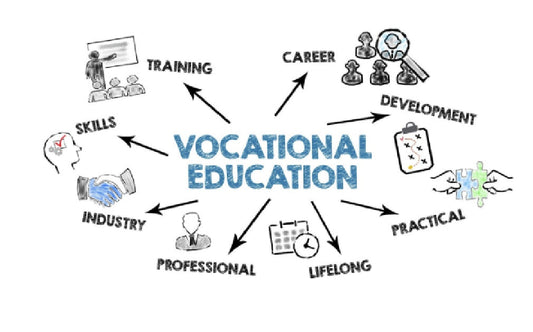The recent announcement of Australia’s revised immigration policies, specifically targeting international students, has sent ripples through the nation's education sector. The most alarming indicator is the sharp decline in student visa applications, a direct result of the government's decision to reduce its migrant intake. According to recent data from the Department of Education, the numbers paint a bleak picture: international student visa applications to Australia have dropped by half between August 2023 and August 2024. This staggering reduction, alongside a series of restrictive policies, has set the stage for what many are calling an educational and economic crisis.
A Rapid Decline in Visa Applications
In August 2024, only 15,270 offshore student visa applications were lodged, compared to 30,703 in August of the previous year. July’s figures tell a similar story, with just 18,697 applications in 2024, a stark decrease from 36,207 in July 2023. This substantial drop, particularly from critical markets like India and the Philippines, signals more than just a temporary dip in interest. It reflects growing uncertainty about Australia as a desirable destination for international education, a sector that has long been a cornerstone of the nation's economy.
India, Australia’s second-largest source of international students, has seen one of the most dramatic declines, with visa applications dropping 66.4%. In July and August 2023, 13,047 Indian students submitted applications. By 2024, that number plummeted to just 4,383. Similarly, applications from the Philippines dropped from 5,126 to 849, while Pakistan’s figures fell from 4,234 to just 616 during the same period.
China, a dominant player in the international student market, showed more resilience, with a decline of less than 10% in visa applications. However, even this reduction signals a growing concern that Australia’s once-thriving international education sector is now facing challenges from multiple fronts.
Government Policies and Their Implications
The drastic reduction in visa applications can be directly linked to a suite of new policies aimed at curbing Australia’s migrant intake. These measures include:
- Cap on International Student Numbers: The Australian government has capped the number of international students at 270,000 for 2025, a policy intended to manage migration but with significant unintended consequences for education providers.
- Increased Visa Fees: The application fee for international student visas was raised to AUD$1,600, making it one of the most expensive in the world. This hike further discourages prospective students, especially those from developing countries, from choosing Australia as their destination for education.
- Provider Caps and New Restrictions: The introduction of caps on education providers, alongside tighter regulations, has limited institutions' ability to enrol international students freely. These restrictions, though aimed at improving the quality of education, have created an environment of uncertainty and decreased opportunities for many prospective students.
The Economic Fallout
International education is Australia’s fourth-largest export, contributing over AUD$37.5 billion annually to the economy. The current decline in visa applications is not just a blow to universities and vocational institutions but threatens a far-reaching economic collapse across multiple sectors. Beyond the education sector, industries such as hospitality, retail, accommodation, and tourism all benefit significantly from the presence of international students. Many small businesses in metropolitan and regional areas are reliant on this influx of international consumers.
With fewer international students coming into the country, the Australian economy stands to lose billions of dollars in revenue. Universities, many of which are already struggling due to the impact of the COVID-19 pandemic, now face further financial pressure. Job losses in the education sector are expected, particularly among casual academic staff, administrative workers, and support services employees.
A Warning Ignored
The recent drop in international student numbers is not surprising to those within the industry. Various educational bodies and organisations have long warned the Australian government of the economic and social consequences of implementing such restrictive policies. These warnings emphasised that international students contribute not just financially but also culturally and socially to the fabric of Australian society. They enhance the educational experience of domestic students, bring global perspectives into the classroom, and foster international collaborations.
However, despite these warnings, the government moved forward with its strategy to limit migrant intake, focusing on short-term goals without fully considering the long-term impact on one of the country’s most valuable industries.
The Broader Impact: A Reputation at Risk
Australia’s global reputation as a premier destination for international education has been carefully built over decades. Yet, the recent policy changes threaten to dismantle this reputation. International students have traditionally chosen Australia for its high-quality education, vibrant multicultural society, and strong job prospects. Now, prospective students may look to other destinations such as Canada, the United States, or the United Kingdom, all of which offer competitive education systems without the same level of restrictive immigration policies.
Moreover, the increased visa fees make Australia a less attractive option for students from lower-income countries. These students often seek financial support from family or loans to cover their education costs, and the added burden of high visa fees could be the final deterrent in their decision-making process.
A Disproportionate Impact on Developing Countries
The recent data shows that the drop in visa applications has hit students from developing countries the hardest. Nations like India, Pakistan, and the Philippines have long been key markets for Australia’s international education sector. The sharp decrease in applications from these countries highlights a worrying trend: Australia is becoming increasingly inaccessible to students who could benefit the most from its education system.
For many students from developing countries, studying abroad is a path to better career prospects and improved living standards. Australia’s new policies are now cutting off this path for thousands of aspiring students, pushing them to seek opportunities in other countries where immigration policies are more welcoming.
Quality Concerns in Higher Education
In addition to the financial and reputational impacts, these student caps raise concerns about the long-term quality of Australian higher education. International students bring a diversity of perspectives and experiences to the classroom, enriching the educational environment for all students. With fewer international students, the classroom experience becomes less global, potentially reducing the quality of education for domestic students.
Moreover, international students often enrol in high-demand courses like engineering, IT, and healthcare, filling critical gaps in Australia’s workforce. Limiting their numbers could exacerbate skills shortages in these key sectors, further compounding the economic challenges Australia faces.
The Path Forward: Balancing Migration and Education
While the government’s goal of managing migrant intake is understandable, the current approach is creating more harm than good. A more balanced solution is needed, one that addresses migration concerns without crippling the international education sector. This could include:
- Targeted Visa Reforms: Rather than blanket restrictions, visa reforms should target specific areas of concern, such as ensuring that students are genuinely coming to study and not for other purposes. Enhanced visa monitoring systems could be implemented to ensure compliance without deterring genuine students.
- Increased Support for Ethical Providers: The government and regulatory bodies should focus on supporting ethical education providers who uphold high standards while cracking down on rogue providers. This would ensure that international students continue to receive a quality education without damaging Australia’s reputation.
- Flexible Cap Allocations: The student caps should be more flexible, taking into account the capacity of institutions and the needs of the economy. Universities with a strong track record of supporting international students should be given more flexibility in their enrollment numbers, allowing them to continue contributing to Australia’s global education leadership.
A Crossroads for Australian Education
The dramatic decline in international student visa applications is a wake-up call for Australia. The current strategy of capping student numbers and increasing visa fees may address short-term concerns around migration, but the long-term consequences for the education sector and the economy are far more severe. As international students look to other countries for their education, Australia risks losing its status as a leading destination for global education.
A balanced approach focused on maintaining quality while addressing migration concerns is urgently needed. Without swift action, Australia’s international education sector could face a downturn, which may take years to recover, if it can recover at all. The time for policymakers to listen to industry voices and adapt their approach is now before the damage becomes irreversible.


































